Bushfires: No place to run and nowhere to hide on Kangaroo Island
When the flames ripped across Kangaroo Island, killing two people and razing everything in their path, there was no place to run, nowhere to hide.
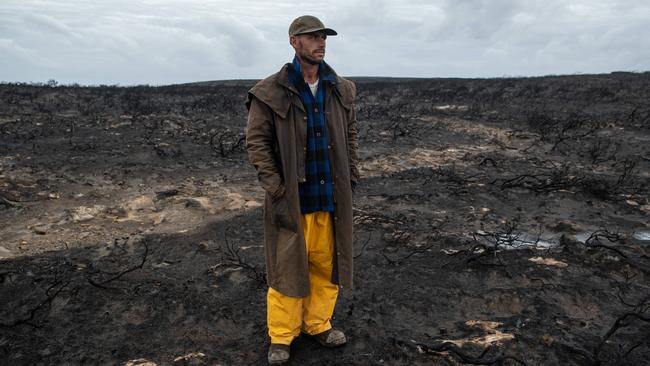
When the flames ripped across Kangaroo Island, killing two people and razing everything in their path, there was no place to run, nowhere to hide. You had to endure and hope for the best.
After two weeks of fear and anguish for its 4200 residents, the bushfire emergency has at last eased, allowing shell-shocked locals to take stock.
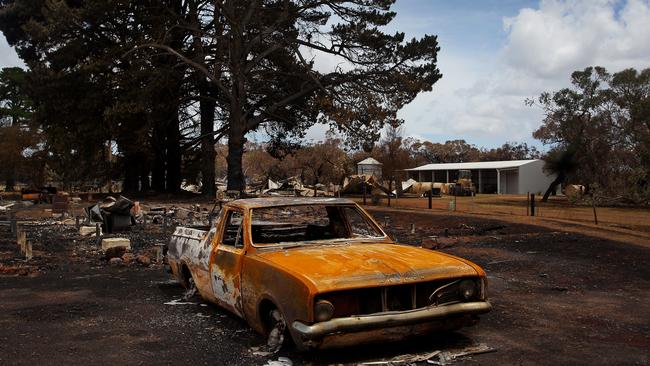
The once-picturesque holiday retreat off South Australia’s Fleurieu Peninsula is now a vale of tears, 40 per cent of the island scorched, much of its mainstay tourist accommodation in ruins, a scene of devastation that has people wondering how they can possibly rebuild.
Surveying the damage, Vivonne Bay resident Rick Slager said quietly: “I don’t think anyone has seen a fire like this. There was no stopping it — we just kept falling back and falling back.”
He was evacuated on Wednesday night, but opted to return the next day to help defend his community in its hour of need.
The water bombers flew mission after mission, saving imperilled homes but not the Vivonne Bay Lodge, which burnt to the ground. Its manager was too distraught to speak on Friday.
Two firefighters were injured in the chaos on Thursday night as flames bore down from all sides, whipped up by howling winds.
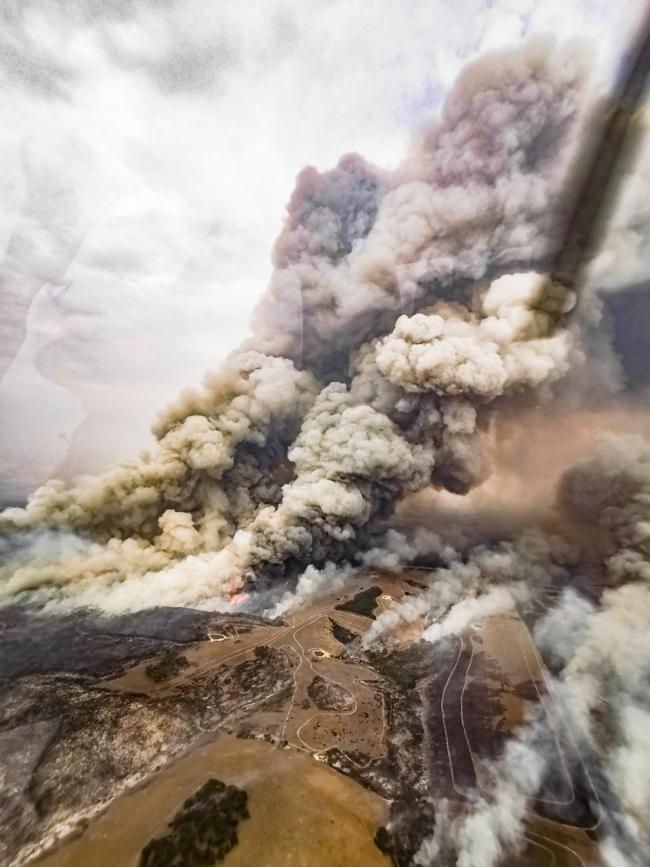
Somehow the township of Parndana was spared – but it was a close-run thing, a tribute to the fire crews who stood their ground when all seemed lost.
Another local, Graham Watters, told of his narrow escape. He was caught in a “burnover” in his ute but somehow remaining calm and composed, comforting a terrified novice firefighter who was with him while the maelstrom raged. “I was holding his life in the palm of my hand,” Mr Watters said, marvelling at their escape.
Everyone is grimly aware of the fate of popular father and son Dick Lang, 78, and Clayton Lang, 43, who perished when their car was engulfed on the Playford Highway on January 4. Dick Lang was a pioneering bush pilot who knew the outback like the back of his hand; he had been on the road with his youngest son, a highly regarded surgeon, trying to reach the family property after two days away fighting the fires.
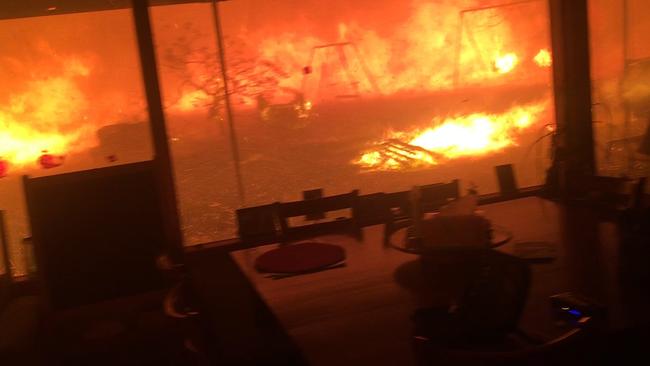
Peter Davis, 73, and his two sons captured terrifying phone footage of the firestorm that trapped them in the family’s farmhouse at Gosse, flames licking at the windows. A volunteer firefighter of 50 years’ standing, Mr Davis said he had experienced nothing like it. “You see huge amounts of embers, you see things flying through the air and these twisters where flames go up like a tornado,” he recounted.
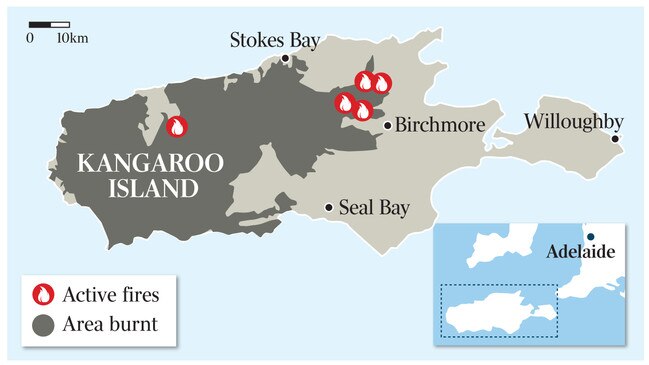
“It’s awesome, it’s unbelievable the power and the combustion of things, and the noise is intense. It picked up a trampoline and threw it on the corner of the house and the car, and then it picked it up again and threw it another 20m.”
His beehive business has been devastated, with more than half the 1200 hives lost. It would take years to recover, he said glumly.
“One of the things we’ve lost is the resource that the bees rely on to collect pollen and honey. That resource, the native trees, will not flower again for seven years.”
Danny Le Feuvre, chair of the Apiaries Alliance of SA, said a quarter of Kangaroo Island’s famed beehives had gone up, compounding the fire losses of honey makers in NSW that could create a national shortage of the product.
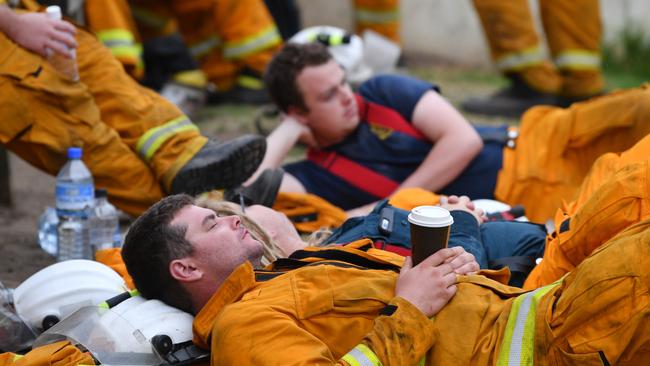
Country Fire Service chief officer Mark Jones said an extra 55 firefighters had been rushed to the island on Friday to bolster the 280 personnel who bore the brunt of the overnight crisis that pushed to the extreme the threat to life and property.
Fortunately, injuries sustained by the two affected CFS members were minor, though it took to 22 the number hurt while battling the Kangaroo Island fires.
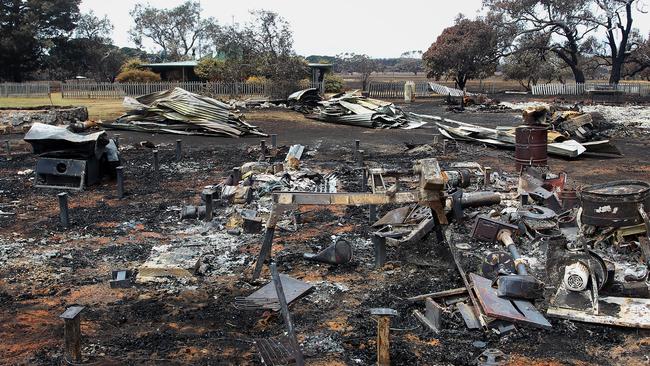
Two fire trucks were also damaged in burnovers on Thursday.
Rain and cooler temperatures provided a welcome respite, and the hope is that improved conditions will persist into next week.
An estimated 171,000ha of the island has been blackened, approaching half the total land area, and the South Australian government has appealed for federal help to bring in more aerial tankers to contain further outbreaks.
Additional reporting: Michelle Ethridge, Mark Schliebs
More Coverage
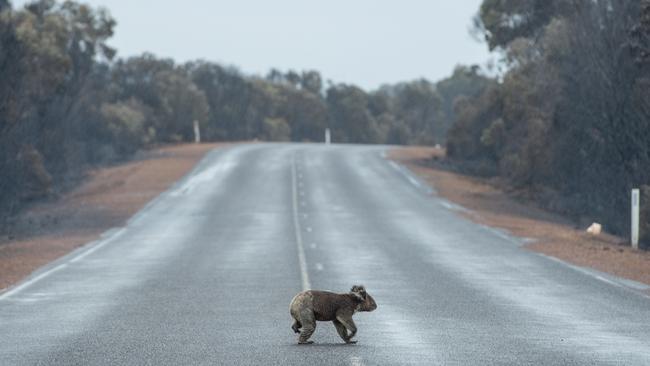

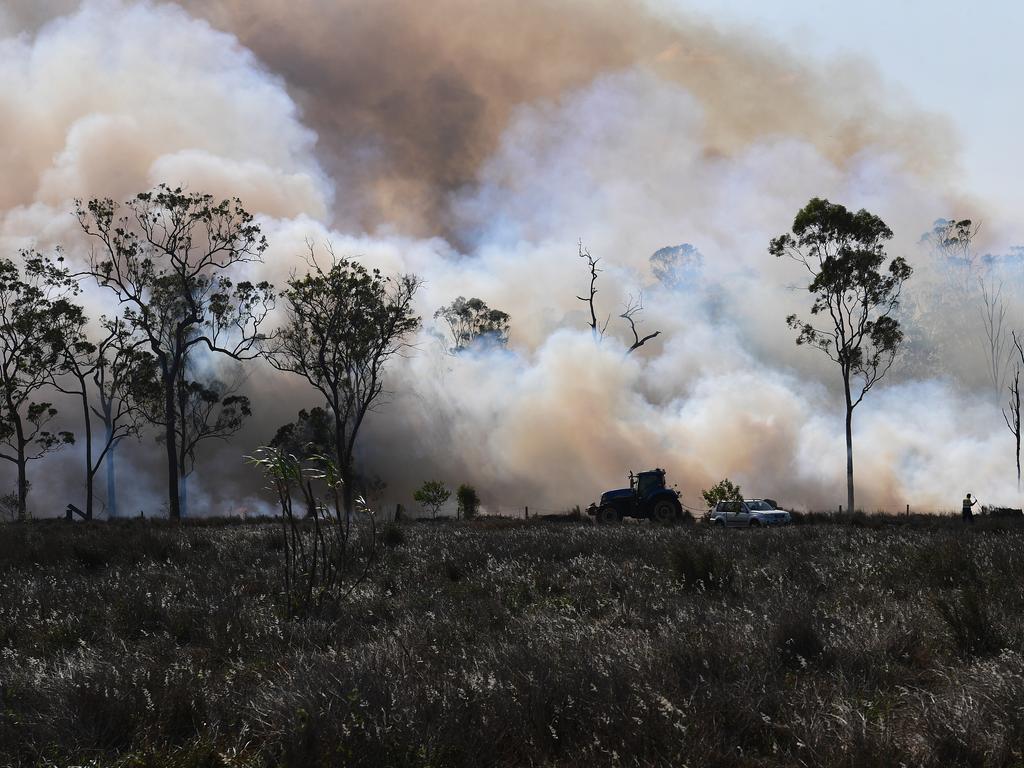


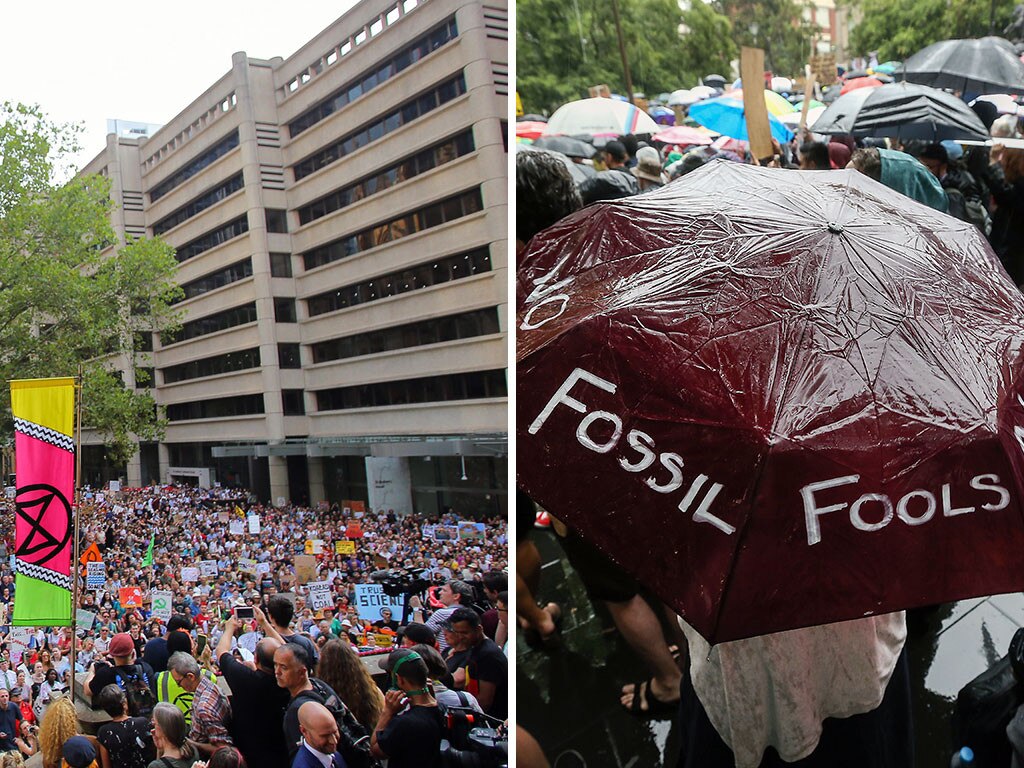
To join the conversation, please log in. Don't have an account? Register
Join the conversation, you are commenting as Logout